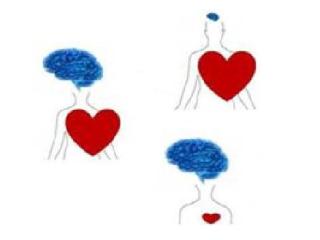Blog: A novel path to creativity revealed
| Datum: | 01 juni 2017 |

Vinci-researcher Georgiana Bălău
Creativity represents a fuel for progress, especially at work, as organizations rely on it while constantly seeking to maintain but also to increase their competitive advantage. Creating a new design for a product, implementing a new working process online, organizing a team meeting in a creative way are just some examples of creative output that managers prefer to see delivered constantly by their employees. Creative employees are every manager’s dream! However, the path to creativity is often off the beaten one. How come that some employees distinguish themselves as creative at work while some other employees come across as being less creative? What is it that managers should know about employees generating more or less creative output?
At work, in order to be able to accomplish their job responsibilities and seize the daily opportunities, employees continuously need to process increasing amounts of information. This usually happens whenever reading reports, accessing and reading websites cluttered even with relevant information, discussing with colleagues about various tasks etc. All these and even more activities alike require cognitive effort. Employees primarily need to cognitively organize the information they are exposed to before any other attempt to come up with sensible, creative solutions that inform their activities at work. Although no two employees can be alike in the way they process information, their cognitive style maps the way information is usually processed.
As information processors, employees usually process information in two ways: intuitively and rationally. Through a more intuitive way of processing information employees are more capable to quickly connect information to formulate a solution to a problem while through a more rational way of processing information employees are more capable to slowly judge the information at hand, taking a step-by-step approach when solving a problem.
Are employees who process information simultaneously in an intuitive and rational way more creative?
Are employees who process information in a more rational way than in an intuitive way more creative?
Are employees who process information in a more intuitive way than in a rational way more creative?
It’s only one of these questions to which answering ‘Yes’ reveals the novel path to creativity. It is not only lay-people who would regard this to be a challenging task but also managers. Linking creativity of employees to the way information is being processed represents a novel approach to understand creativity and organizations can benefit immensely from such insights.
According to the most recent research conducted at the individual level, employees who process information in a more intuitive way than in a rational way are more creative than those employees who process information in a more rational way than in an intuitive way. This is the path to better understand creativity!
Who can safely walk on this path? The answer is managers who can spot those employees who make more quick judgements and connect information to swiftly formulate a problem solution than approaching a problem in its details. These are the employees who guarantee to deliver creative output. Employees who process information in a more intuitive way than in a rational way are also more creative than those employees who process information simultaneously in an intuitive and rational way.
Are employees who process information in a more intuitive way than in a rational way more creative? The answer is ‘Yes’ to this question! Managers are provided with a lot of freedom to consciously walk on this novel path to creativity. I wonder how managers themselves process information.
Want to know more? Don’t hesitate to contact the author of this post: Georgiana Bălău, g.balau rug.nl / vinci rug.nl
